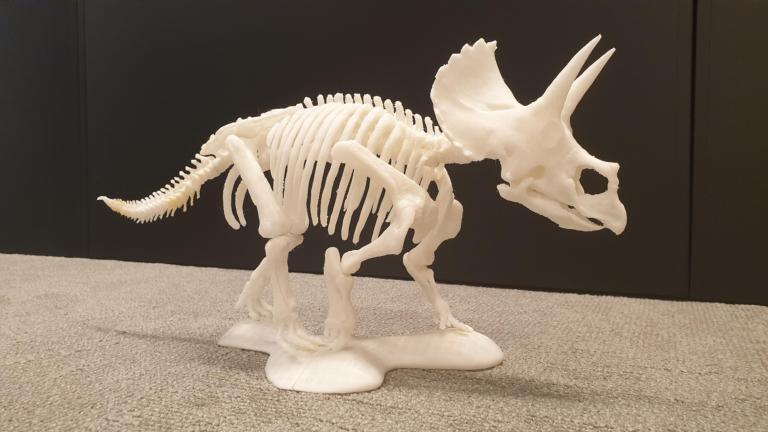
Naturalis has a large number of dinosaurs and dinosaur bones in its collection. Both the T. rex skeleton and the Triceratops skeleton are fully scanned with modern 3D scanning technology. In this way, digital research can also be done on the bones and missing bones of the specimens can be completed using 3D prints. Naturalis also prints some complete skeletons for other museums - soon there will also be a 3D print copy of Triceratops 'Dirk' on display in Torres Vedras (Portugal) as well as a copy of T. rex 'Trix' in Nagasaki (Japan). In the LiveScience hall there are a number of large 3D printers where you can follow the process live. Naturalis developed two teaching packages for primary schools to get started in the classroom.
T. rex Trixreviving a fossil
In 2013 Naturalis dug up a 66 million year old skeleton of Tyrannosaurus rex, the most famous carnivorous dinosaur, on the prairie of Montana (USA). It is one of the best preserved skeletons in the world and is now on display in our museum. Her nickname (it's a lady) is Trix. All bones are 3D scanned and can be 3D printed in any size. Fossil bones and scans can be used to research the appearance and behavior of T. rex. In this activity you print a mini-dinosaur for the classroom. Students get acquainted with form and function, the construction of the skeleton and the life of this special animal.
- Target group: upper primary education (groups 5-8)
- Duration: approximately one part of the day (excluding print duration), can be split up into parts as you see fit
Triceratops Dirkreviving a fossil
Naturalis found a lot of fossil bones of Triceratops, the horned dinosaur, in Wyoming (USA) in recent years. The first excavated skeleton, nicknamed Dirk, can now be admired in the museum. More skeletons will follow. What do these fossils tell us? Print a mini-dino in your classroom and learn about the form and function, the construction of the skeleton and the life of this special animal.
- Target group: upper primary education (groups 5-8)
- Duration: approximately one part of the day (excluding print duration), can be split up into parts as you see fit